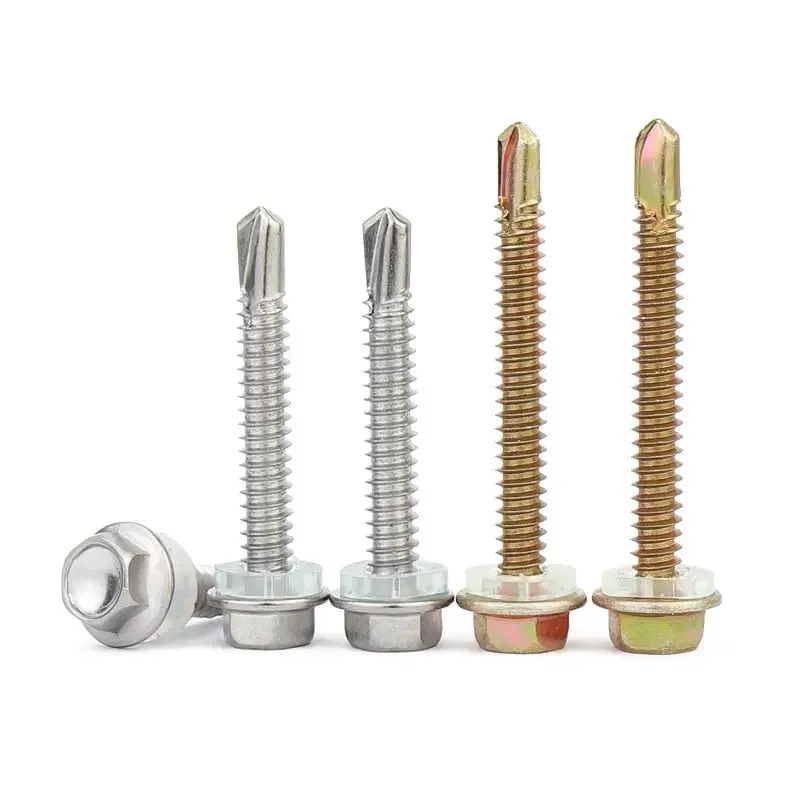

Comparing Spring Washers and Flat Washers for Optimal Hardware Solutions
Aug . 16, 2024 18:22 Back to list
Comparing Spring Washers and Flat Washers for Optimal Hardware Solutions
Understanding Spring Washers and Flat Washers
When it comes to fastening components in various engineering and construction applications, two of the most commonly used types of washers are spring washers and flat washers. Each of these washers serves a unique purpose and offers specific benefits, making them integral to mechanical assemblies and structures.
What are Flat Washers?
Flat washers are thin, circular plates with a hole in the center, used primarily to distribute the load of a threaded fastener, such as a bolt or screw. The main function of a flat washer is to prevent damage to the surface of the material being fastened. By providing a larger surface area, flat washers help to prevent the fastener from digging into the material and reduce wear.
Flat washers are made from various materials, including steel, stainless steel, plastic, and brass, depending on the application. They come in different sizes to suit various bolt diameters. Apart from load distribution, flat washers also act as spacers, provide insulation, and serve to protect surfaces from damage during the tightening of fasteners.
What are Spring Washers?
Spring washers, on the other hand, are designed to exert a force against the fastener, providing a degree of flexibility. Unlike flat washers, spring washers are usually made of steel and are designed with a specific geometry that enables them to compress and expand. This elasticity allows them to accommodate dynamic loads and changes in positioning, which is crucial in applications subject to vibration, thermal expansion, or other forms of movement.
spring washers and flat washers

A common type of spring washer is the belleville washer, which is conical in shape and provides a high degree of spring force in a compact form. These washers are often used in applications like automotive assemblies, electrical connections, and equipment that undergoes significant vibration. By allowing for some movement, spring washers help to maintain a tight connection and prevent loosening over time.
Applications and Considerations
Both spring washers and flat washers have a range of applications spanning various industries, including automotive, aerospace, electronics, and construction. The choice between using a flat washer or a spring washer typically depends on the specific requirements of the project.
When selecting a washer, engineers must consider several factors such as the type of load (static vs. dynamic), environmental conditions (corrosive environments, high temperatures), the material of the components being fastened, and the overall design of the assembly. For instance, in high-vibration applications, spring washers are preferable, while flat washers are often sufficient for static load applications.
Conclusion
In summary, both spring washers and flat washers play crucial roles in ensuring the integrity and reliability of mechanical assemblies. Flat washers provide support and protection to surfaces, while spring washers offer a level of flexibility that helps maintain tight connections in dynamic environments. Understanding the differences and appropriate applications of each type can lead to better design choices and improved performance in various engineering projects. Whether you're a seasoned engineer or a DIY enthusiast, choosing the right washer can make all the difference in achieving optimal results in your work.
Latest news
-
Hot Dip Galvanized Bolts-About LongZe|High Strength, Corrosion Resistance
NewsJul.30,2025
-
High-Strength Hot Dip Galvanized Bolts - Hebei Longze | Corrosion Resistance, Customization
NewsJul.30,2025
-
Hot Dip Galvanized Bolts-Hebei Longze|Corrosion Resistance&High Strength
NewsJul.30,2025
-
High-Strength Hot-Dip Galvanized Bolts-Hebei Longze|Corrosion Resistance&High Strength
NewsJul.30,2025
-
Hot Dip Galvanized Bolts-Hebei Longze|Corrosion Resistance&High Strength
NewsJul.30,2025
-
Hot Dip Galvanized Bolts - Hebei Longze | Corrosion Resistance, High Strength
NewsJul.30,2025

